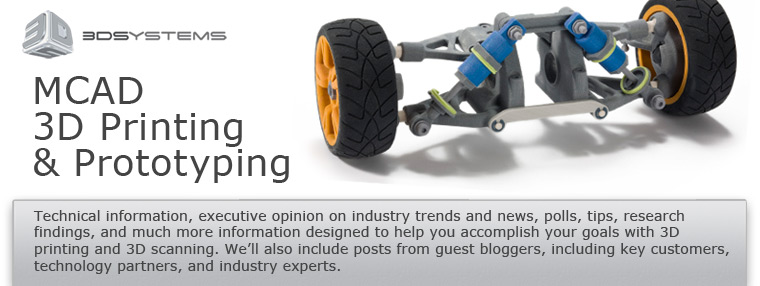There’s been a lot of hype over the past year about low-cost 3D printers. All of the rapid prototyping (additive manufacturing) companies have either introduced low-priced systems to the market or lowered the price of existing systems and promote how they are making the technology more accessible to designers, engineers and even the hobbyist. Editors, industry analysts and even the New York Times have jumped on this trend which seems to be the focus of nearly every article and report.
But what is a low-cost 3D printer? When people talk about low cost, they seem to refer only to the purchase price of the 3D printer. Sometimes machines that are billed as low cost are actually much more expensive than most other machines when all variable costs are factored into the equation. We’ve had customers tell us that they purchased another system because of the low initial purchase price of the printer itself, only to quickly discover that they couldn’t afford to keep the system operating. It became an expensive paper weight.
So, how can you cut through the hype and determine the real cost of a 3D printer? Here are six easy steps.
First, let me provide a disclaimer that I’m only referencing industrial- or professional-quality 3D printers. Industry experts seem to universally agree that open source systems that have been receiving quite a bit of publicity recently are not suitable for professional use from a quality, accuracy, throughput or speed standpoint.
1. Yes, affordability starts with a low-priced machine. But look beyond the price of the machine itself. Check to see if the system requires expensive lasers, complex thermal controls or special facility requirements. All of these items can add thousands of dollars onto the price of a machine.
2. How expensive is the build material? Find out how much build material is included in the purchase price of the system. Be sure to base this cost on volume rather than weight (i.e.; how many prototypes will that amount produce?). Then learn the on-going replacement cost of the material.
3. What about waste? Is all of the unused build material from a build completely recycled for future builds and therefore unwasted? If not, make sure you factor the cost of the wasted material into your cost calculator. And, does the system require you to build supports? Some systems require you to build supports, others don’t. Building supports requires expensive build material that can really add up over time, so be sure you factor this ongoing cost into your estimate.
4. What about the cost of post-processing? All prototyping systems require some sort of post-processing. Check to see if you must purchase additional equipment, chemicals, ventilation and special hazardous waste handling and disposal in order to post-process parts. Compare those systems with systems that provide you with the low-cost option to cure parts with tap water and Epsom salt.
5. Assess maintenance costs. Some systems use standard, off-the-shelf inkjet printing technology and a modular design in order to make component replacement quick, easy and cost efficient.
6. Considering all of these variable costs, estimate the total expense per finished model.
Example:
Total cost for Z Corp.’s finished ZPrinted models runs about $2 - $3 USD per cubic in ($0.12-$0.18 USD per cubic cm). An 8.75 cubic in (143 cubic cm) model like the one below costs about $22 USD to produce.

If low-cost 3D printing is important to you, “Buyer beware.”
http://www.zcorp.com
















